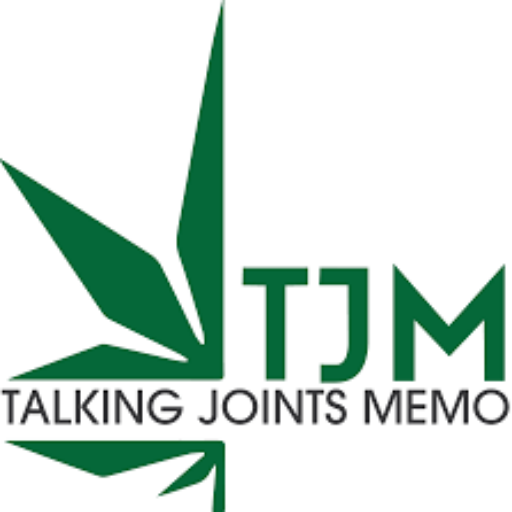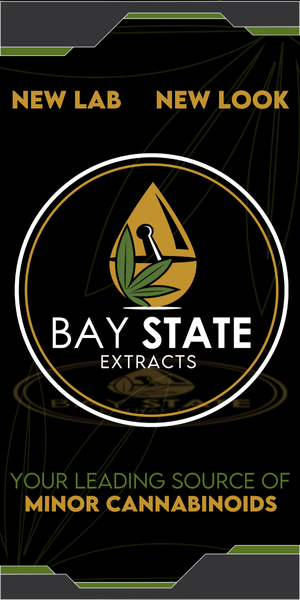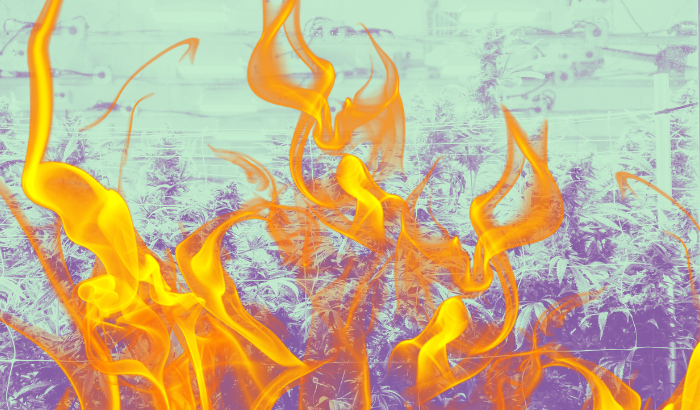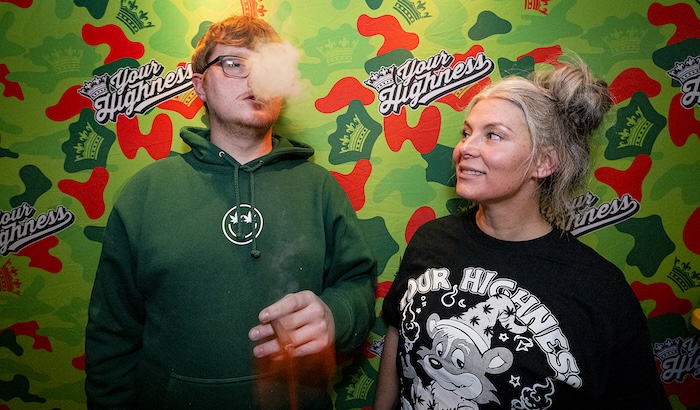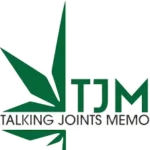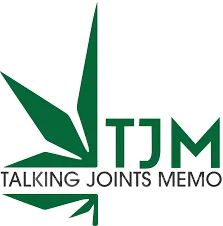
Sloppy New York Times smear job includes commissioned study, 200-plus interviews, reefer-mad vignettes, and no specific mention of the virtues of cannabis
There is very little that a single regional reporter can do to unscrew the damage done by a media monolith like the New York Times. But in the wake of its Oct. 5 article, “As America’s Marijuana Use Grows, So Do the Harms,” hijacking the national cannabis dialogue overnight, it seemed important to speak up, since the 4,500-word feature taps dozens of sources to generate fear about pot use, but not a single opposition quote, comparison, or study recognizing the potential positives.
The reporters get right to their point—marijuana is a bigger problem than ever before, from “Washington State to West Virginia.” The unspeakable scourge has not only been noticed in “small community hospitals,” but also in “large academic medical centers.” Nobody is safe from “a potentially devastating condition that once was rare but now, [physicians] say, is common.”
Thankfully, the Times is here to sound alarms about this “accumulating harm,” which “is broader and more severe than previously reported.”
That’s basically the self-aggrandizing thesis at the center of this man-made catastrophe. To back it up, the Times commissioned “a unique data analysis” … “by a Columbia University epidemiologist.” Using “estimates based on responses to the 2022 U.S. national drug use survey,” the researcher determined that “about 18 million people — nearly a third of all users ages 18 and up — have reported symptoms of cannabis use disorder.”
[Further reading: Open Letter Response to the NY Times article, ‘As America’s Marijuana Use Grows, So Do the Risks’ by Ben Caplan, MD]
The Times concedes, “One impediment is the lack of a specific diagnostic code for the syndrome in the system used by medical providers in the United States, which has made tracking the condition challenging.” “The C.D.C. says there are plans to roll out a distinct diagnostic code for cannabinoid hyperemesis syndrome late next year, which could help determine the scope of such cases.” In the meantime, the Times is offering a sensational smorgasbord of disconcerting anecdotes about people—mostly chronic users—vomiting and “writhing around in pain,” as one Ohio doctor described their apparent C.H.S. patients.
You might ask, Why can’t someone who is suffering from C.H.S. just stop smoking weed or eating infused edibles? According to the article, many of them don’t know any better, which I agree is unfortunate, but others just can’t get the green monkey off their back. Of those 18 million individuals the Times determined have reported symptoms of cannabis use disorder, about “three million people are considered addicted,” meaning “they continue to use the drug despite significant negative effects on their lives.”
But wait, it gets worse! “Among 18- to 25-year-olds: More than 4.5 million use the drug daily or near daily, according to the estimates, and 81 percent of those users meet the criteria for the disorder.” You would think that journalists and analysts would reconsider everything from methodology to messaging with results that extreme, but the Times soldiers on beyond reason, cranking the threat level with every sentence, and quoting pure hyperbole from a director of the National Institute on Drug Abuse: “… almost everybody that uses it every day is reporting problems with it,” said Dr. Wilson Compton. “That is a very clear warning sign.”
In addition to these revelations about several million wastoid canna junkies, some of whose “chronic use makes them miss out on important developmental markers like getting a driver’s license or holding a job,” “data and interviews reveal … growing alarm among … physicians who are seeing more cases of schizophrenia that they believe are linked to cannabis use.” It’s a kitchen-sink affair, with the reporters straining themselves to link weed and psychosis, stacking vignettes interspersed with cherry-picked tidbits from trials and studies. Imagine a compendium condemning the hazards of cars, running the gamut from environmental impact to seatbelt safety and pedestrian deaths, but that barely mentions the value and convenience of the motor.
Why are all these points jumbled together in a single omnibus contrivance? Because it is a deliberate hatchet job, poised to set the medical and adult-use cannabis industry back further than the thousands of unlicensed rogue pot shop bodegas in the newspaper of record’s backyard. There’s no conspiracy, and the Times isn’t acting on behalf of Big Pharma or the beer and spirits industry. Sadly, there’s no real motivation beyond marking territory; again, the “accumulating harm is broader and more severe than previously reported,” and now, here they are, Ivy League epidemiologist in tow, to warn the masses.
To that end, they go to extremes. I wouldn’t bother suggesting a whatabout comparison to booze, excessive use of which facilitates about 178,000 American deaths every year, but the Times insisted. The message in the piece is clear: Believe it or not, weed is worse than alcohol in some ways. They even have the stats to prove it:
Last year, the federal government’s National Survey on Drug Use and Health found that the rate of cannabis use disorder among people ages 18 to 25 was 16.6 percent. It has caught up to the rate of alcohol use disorder, 15.1 percent.
Those ages 12 to 17 have not shown notable increases in cannabis use in the survey, but their rate of cannabis use disorder is ticking up, and it’s higher than their rate of alcohol use disorder (5 percent compared with 3 percent).
Over and over, it’s mentioned that more and more people are consuming cannabis. And while the Times has gone to great lengths here to show why that’s bad, I’ll argue the contrary. After all, Is it better for young people to be drinking? What about blow? Or dope? Weed seems to be much safer than fentanyl, which claimed more than 100,000 US lives last year, but that’s not clear in this article, which laments: “While opioid users can get some relief with medicines to help break their addiction, there are no F.D.A.-approved drugs to help people quit marijuana.”
No inconvenient information can impede their mission. While the “industry at large” and its “ever-expanding range of cannabis products so intoxicating they bear little resemblance to the marijuana available a generation ago” absorb the brunt of the blame for C.H.S., psychosis, and other ailments in between, halfway through the article we learn that the Times is also talking about “highly intoxicating hemp-derived compounds like Delta-8 THC.” That’s a massively complex tangential issue that involves potentially dangerous and largely unregulated synthetic creations that many state-licensed cannabis companies call into question, but there’s no room for nuance when you’re pushing prohibition.

If there’s any silver lining as the Times sees it, and I don’t completely disagree, it’s that researchers will come to know more about these scarcely significant concerns as federal and other “barriers to scientific study” are removed. It’s ironic shade for them to throw though, since the legacy outlet has historically echoed and flanked the government’s stance—neglecting to recognize the benefits of cannabis, and now attributing the fallout from that taboo status to high-potency concentrates and the “$33 billion industry [that] has taken root.”
For its article, the Times reviewed survey responses from roughly 600 people with C.H.S., most of whom reportedly said they “had been disbelieved by colleagues, friends or relatives, or accused of trying to sabotage marijuana legalization.” For the reasons noted herein, and since the journalists behind this massacre failed to include any positive comments from the “more than 200 health officials, doctors, regulators and consumers” they interviewed, I stand among the disbelievers.
But while I have more skepticism than sympathy for those who are mildly impacted by C.H.S. symptoms, I do empathize with their experience. It comes from having Oral Allergy Syndrome, which means I can’t eat any uncooked vegetables or fruits. Walnuts mess me up as well, as do certain strains of weed, but that’s another story. Similar to many who endure intestinal troubles from cannabis, I belong to Facebook support groups where we commiserate over how nobody believes us about having to steer clear of cantaloupe and salad. The difference, however, is that I doubt the Times is coming to the rescue; addressing my problem in 2017, one of its health and wellness writers wrote that O.A.S. “occurs in a small percentage of adults who have seasonal allergies.”
In reality, according to Stanford Health Care, “this syndrome occurs in a large number (up to 70 percent) of people with pollen allergy.” Going by data from the Centers for Disease Control and Prevention, that means there are about 40 million of us who cower at the thought of pineapple. That’s more than six times the estimated “six million near-daily marijuana users in the United States [who] could have symptoms of C.H.S.”
We’re invisible, but we are everywhere. From West Virginia to Washington State.










